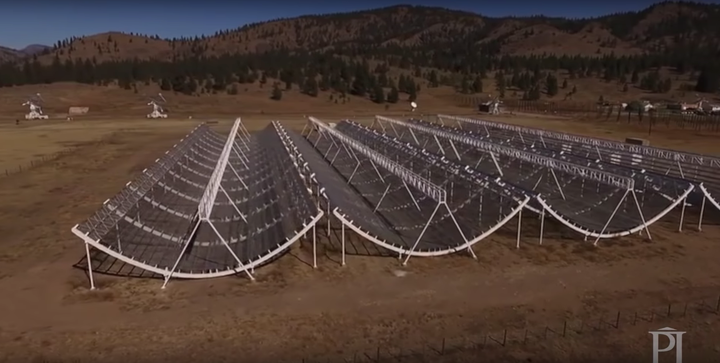For only the second time ever, scientists say they have detected a mysterious repeating radio signal from distant space, with its origin remaining unknown.
A Canadian research team announced the cosmic phenomena’s discovery in the journal Nature on Wednesday. The radio burst, which repeated its signal six times, was detected among 13 other so-called Fast Radio Bursts, or FRBs, in July and August of last year.
“These repeat bursts are consistent with originating from a single position on the sky, with the same dispersion measure,” the researchers’ report states of the detected “repeater.”
Only several dozen FRBs, which last about 1 millisecond, have been detected since their discovery in 2007, as NPR previously reported. Repeating FRBs are even more rare, with the first, labeled FRB 112102, detected in 2007 following a review of telescope data that had been collected in 2001. That repeater, in comparison to this latest sighting, only repeated its signal once.
As for what FRBs are and where they come from, little is known. Some scientists suspect that these radio waves originate from black hole activity or solar flares that travel from billions of light-years away. Others say they could be evidence of advanced alien technology.
“We have more ideas of what they could be than we have actual detected fast radio bursts,” Dustin Lang, a computational scientist with Ontario’s Perimeter Institute for Theoretical Physics whose software helped detect the FRBs, said in a video released by the Institute on Wednesday.
Fortunately, researchers expect to know more about them sooner than previously expected thanks to technological advancements, particularly with the Canadian Hydrogen Intensity Mapping Experiment (CHIME) telescope, which is touted as one of the most powerful radio telescopes in the world.
Within weeks of CHIME’s FRB-detecting software being activated last summer ― in what Lang said was only a testing phase that didn’t run on full capacity ― CHIME detected these 13 new bursts. Prior to this, only 50 FRBs had ever been observed by humans, only one of which was a repeater.
That high rate of discovery suggests that FRBs, let alone repeating FRBs, may not be as unique as we think, said Perimeter Institute faculty member Kendrick Smith.

“So what we’ve shown is that by discovering a second FRB is that the repeating FRB is not unique and maybe we can hope to find more,” he said in the video interview.
Seth Shostak, senior astronomer and director of the Center for SETI Research, a nonprofit based in California that searches for extraterrestrial intelligence, also has high hopes of learning the FRBs’ origin, which he said is “bound to be interesting.”
“These things belch out tens of millions of times as much energy as the sun would belch out in a similar length of time, so whatever it is, it is something very, very powerful,” he told radio station KCBS. “It could be colliding black holes but you don’t expect black holes to collide and then an hour later collide again, and then after that to collide again, right? So it’s got to be something that can repeat.”
